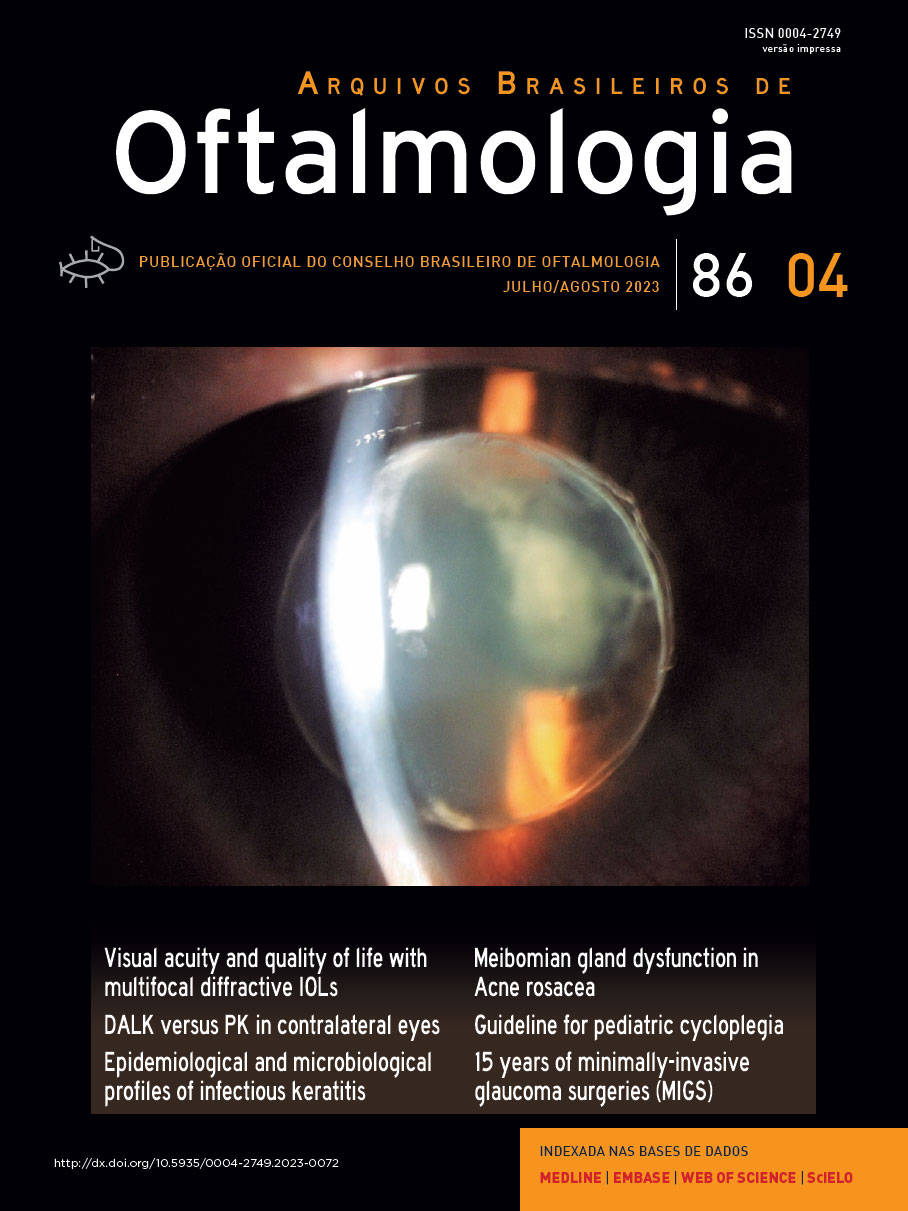Purpose: This study aimed to compare the clinical outcomes following deep anterior lamellar keratoplasty and penetrating keratoplasty in contralateral eyes of the same patients.
Methods: In this retrospective, comparative case series, clinical outcome data included best-corrected visual acuity, refractive spherical equivalent, refractive astigmatism, endothelial cell density, endothelial cell loss, central corneal thickness, and intraocular pressure, which were evaluated at 6, 12, 24, and 36 months after deep anterior lamellar keratoplasty and penetrating keratoplasty. Additionally, complications were assessed.
Results: Fifty-two eyes (26 patients) were included, of which 19 patients had keratoconus, 6 had stromal dystrophy, and 1 had post-laser-assisted in situ keratomileusis ectasia. The mean follow-up was 44.1 ± 10.5 months in the deep anterior lamellar keratoplasty Group and 47.9 ± 11.9 months in the penetrating keratoplasty Group. No significant differences were observed in the mean best-corrected visual acuity, refractive spherical equivalent, refractive astigmatism, and central corneal thickness between the deep anterior lamellar keratoplasty and penetrating keratoplasty Groups during follow-up. The endothelial cell density was significantly higher in the deep anterior lamellar keratoplasty Group than in the penetrating keratoplasty Group at 24 and 36 months postoperatively (p=0.022 and 0.013, respectively). Endothelial cell loss was significantly lower in the deep anterior lamellar keratoplasty Group than in the penetrating keratoplasty Group at 24 and 36 months postoperatively (p=0.025 and 0.001, respectively). Intraocular pressure was significantly lower in the deep anterior lamellar keratoplasty Group than in the penetrating keratoplasty Grroup at 6 months postoperatively (p=0.015). Microperforation occurred in 4 eyes (15%) during deep anterior lamellar keratoplasty surgery; however, penetrating keratoplasty was not required. No endothelial rejection occurred in the penetrating keratoplasty Group during follow-up.
Conclusions: Over the 3-year follow-up, endothelial cell loss and intraocular pressure in the deep anterior lamellar keratoplasty Group were significantly lower than those in the penetrating keratoplasty Group, while visual and refractive results were similar.
Keywords: Corneal diseases/surgery; Keratoconus/surgery; Keratoplasty; penetrating/methods; Corneal transplantation/methods; Intraocular pressure; Comparative study.
